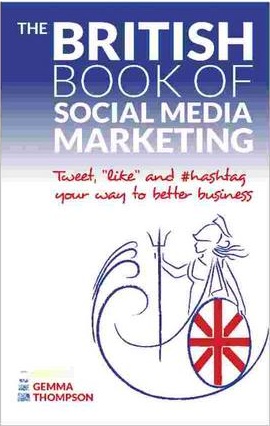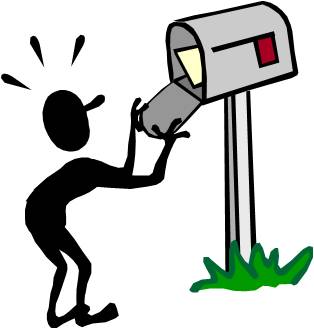January 8th, 2014 — briefing a copywriter, Building a business, Freelance advice, freelance copywriter
It’s a side of business no one wants to talk about.
But the truth is, at some point during your business career you will experience a relationship breakdown with a client.
It is probably one of the hardest things to deal with whether you’re a freelancer or a small business owner. Apart from the fact it means you’re not going to be paid (at least in full), it also hurts because you always want to do your best for your customers and it can come as a slap in the face when, even though you have, they (or you) decide to walk away.
Why things go wrong
Before I go on, this is written from a freelancer’s point of view (because that’s what I am). Although most of the scenarios are written from a copywriter’s perspective (again, because that’s what I am), they can relate to any service provider (they are also fiction, but good illustrations of why things can go pear shaped).
1. Bad brief
In an ideal world, you would go out and meet every new client. During this meeting you will be able to suss them out and come away with a detailed brief.
Of course, it’s not an ideal world and that can’t always happen.
Getting as much detail as possible from a client is essential, but also not always that easy. Some clients believe that as you are a copywriter they can just say ‘I want 3 web pages written’ and it will magically appear.
Don’t be afraid to ask loads of questions, you have to if you are to get a full and clear picture of what they and their customers are looking for.
A bad brief is a disaster waiting to happen. At best it will lead to umpteen rounds of revisions, at worst it will lead to a breakdown in your relationship with your client, or rather soon to be ex-client.
2. Indecisiveness
This usually relates to the client not really knowing what they want.
Someone has probably told them they need a copywriter, but they’re not sure why.
They won’t really know what style they want, what sort of layout, or what the main benefits of their product/service are.
This can only spell disaster. The only solution is to speak with them at length, ask a lot of questions and then make suggestions. It is also a good idea to ask for examples of any particular styles of writing they like. After all, it’s much easier to emulate a style if you can actually see it.
3. Too many cooks
One of the first questions I always ask is what is the review process?
If only one person is to sign it off, who just happens to be the person giving the brief, you can breathe a sigh of relief. But if it is someone else, or worse, a whole gaggle of managers, you could be in trouble.
It’s very unlikely they will all have the same view on content and style, so be prepared for multiple revisions.
Getting a meeting with all the decision makers at the outset is probably a pipe dream, but if you can make it happen, do – getting some ground rules on style from the start will pay dividends later. It’s also your opportunity to let them know how you work and what you expect of them, especially when there are deadlines to hit.
4. Fixed ideas
Now and then you’ll come across someone who knows exactly what they want.
Fantastic! I hear you cry.
You would have thought so, but this can also be bad news.
What happens when their fixed ideas won’t work? They’ve called you in because you are the expert in copy, but when you tell them how their content should be written (i.e. benefits led, second person, informal, engaging etc.) they shout you down and tell you “that won’t work, I want it like this…”
The problem is, what they want won’t work in a month of Sunday’s.
The choice here is to persevere, do what they want and risk ruining your reputation, or walking away due to irreconcilable differences.
The main tip I can give you when taking on new clients is to trust your instincts. Take it from someone who knows. Thankfully, since starting out as a freelance copywriter about 6 years ago, I’ve only had to walk away twice. But if I’d listened to the little voice in my head, I would never have taken on either client in the first place.
I probably agreed because I didn’t have a lot on at the time and had the capacity, but something told me it was a bad idea, and stupidly, I ignored the voice because I knew best.
Well these days that little voice gets the final say.
Your instincts will tell you if the job is right for you or not. It will probably take a little while to distinguish between the good and the not so good, but when you can it will save you a lot of hassle.
Author: Sally Ormond
January 6th, 2014 — social media, social media marketing

The British are odd folk (I can say that because I am British) – some would say reserved, which perhaps accounts for our reluctance to get stuck in to social media.
There are oodles of guides out there that tell us what we should be doing, but much of the wisdom comes from across the pond, relating to American audiences.
But what about the UK?
“The British Book of Social Media Marketing” by Gemma Thompson addresses the need we Brits have for a straight talking, comprehensive guide as to what on earth we’re supposed to do on social media.
Written specifically for the British market, Gemma explores the various social media platforms, but not in a ‘this is what’s available, get on with it’ attitude, but rather a ‘come with me and I’ll help you find the right solution you need for your business.’ It’s a breath of fresh air.
It makes you stop and think about:
- What it is you want to get from social media
- How to place your customer at the centre of everything you do
- Branding
- Scheduling
- Understanding your social media goals
- How to measure your effectiveness
- Building your audience and engaging with them
All from a very British perspective.
It’s a great reference tool that you can dip in and out of as and when you try new social networks.
An inspired touch is the downloadable workbook. By having action points throughout the book, you are actively learning and building your own social media strategy as you read.
Offering a mixture of professional marketing tips with practical information gives this book the edge. It doesn’t dictate which platforms you should be using, but rather explains the pros and cons of each and who uses them so you can identify which will be most beneficial to your business.
If you are a British newbie to social media and need a guide to tell you what’s what, the differences between the platforms, how to use them and – possibly more importantly – how to avoid the common pitfalls, this is the book you need.
The British Book of Social Media Marketing is available as a Kindle on Amazon (the link takes you to the Amazon page).
January 3rd, 2014 — copywriter, copywriting, copywriting tips
It’s well known that your copywriting should be full of benefits if it’s going to be successful.
But it also needs to do something else.
The triggers that make people buy tend happen within their subconscious, so that’s where your copy has to hit them.
Bear with me this makes sense.
There are 3 main aspects to selling to the subconscious that can easily be weaved into your copy.
1. Social proof
Someone is more likely to buy a product if someone they know, respect or admire uses it.
How many shoes, bags or items of clothing have you bought because your favourite actor or singer has been seen wearing/carrying them?
How many bottles of aftershave or perfume have you bought because of a celebrity endorsement?
The reason why you dash out and spend your hard earned cash is because you trust their judgement.
Trust is a huge factor in the buying process. You can promote trust in your products by using case studies, testimonials (especially video testimonials) and endorsements. Even displaying the logos of some of your clients will have a subconscious effect – “if they’re good enough to work for BT, they’re good enough for me.”
2. Scarcity
There’s nothing more motivating than knowing something is in scarce supply, or that an offer is available for a limited period only.
No one wants to think they’re missing out on something.
3. Sensory language
Using words that stimulate the senses will have people falling over themselves to buy from you.
Think carefully about the words you’re using to describe a product; can it be said in a more sensory way, using words that will tease the senses into action. Images are also great for this, especially those that depict a look, life style or image the reader wants to emulate.
These 3 factors will enhance your copywriting measurably.
Think carefully about every word and phrase you use – would it make you buy? If not, think of something that ‘speaks’ to your senses.
Author: Sally Ormond
December 30th, 2013 — Sales Letters, sales writing

Technology may well be moving at a mind-boggling pace, but there will always be room for the humble sales letter within your marketing armoury.
These staples of the marketing world haven’t really changed. Other fads come and go, but your sales letter will always follow the same recipe.
This article looks at how you can make your sales letters stronger and boost their effectiveness.
1. Strong start
If you don’t capture your reader’s attention from the outset, there’s only once place your letter will end up – in the bin.
A great way to make an impact is by using a headline above the salutation in your letter. But make sure it is relevant to the rest of the letter and makes a big impact.
If you decide not to use a headline, all the pressure is on your first sentence.
2. Problems
One of the most powerful ways to structure a sales letter is the ‘problem/solution’ format.
Start out by identifying the problem your reader has and then go on to solve it with your product or service.
Using this method highlights the issue they are facing, shows that you care (that’s where a bit of empathy helps) and that you can make their problem go away – you’re great.
3. Benefits
Your reader doesn’t care what features your product has, all they want to know is how it’s going to make their life easier. Think about what’s important to them; do they want more time, to save money, be more popular? Whatever it is, focus on that as the main benefit of your product.
4. Strong offer
Although the benefits are crucial, your reader is going to buy your offer, not your product. For example, if you and a competing opticians were sending out sales letters and you just told them about your latest range of designer specs, but your competitor did the same but with a ‘buy one get one free’ offer, you can bet your Granny that the reader will go for their offer and not your glasses.
5. Guarantee
It’s also important that you back up your offer with a strong guarantee.
People want to be given peace of mind and a money back guarantee (or something along those lines) will give them the warm and fuzzy feeing they need to be persuaded to part with their hard earned cash.
6. Call to action
Just as any good sales man will ask a customer for an order, your sales letter has to do the same.
Tell them to buy and make it clear how they can do so. Make sure your phone number is displayed prominently so they can easily get in touch.
7. Easy to respond
If your call to action involves them sending off an order form, make sure it’s easy to complete and that you enclose a stamped addressed envelope. If they are to phone through an order, make sure your phone number is easy to find. If you want them to order online, give them clear instructions.
These 7 tips will help you create strong sales letters. Don’t forget, everything your customer needs to know must be in the letter because they can’t ask you questions. Give them an offer they can’t refuse and then make it easy for them to buy. That’s really all there is to it.
Author: Sally Ormond
December 23rd, 2013 — Google, website copywriter, website copywriting

OMG – have you heard the latest?
The way you write for the web is changing so fast. There are Google’s perpetually changing algorithms, new social media platforms springing up, +1s, shares, tweets, status updates…
How on earth are you supposed to know how to write your web copy when the goal posts keep moving?
Whoa!
Hang on there.
Who’s moving the goal posts?
Sure, with every new tweak Google makes, or when a social media platform becomes flavour of the month, there are a shed load of blog posts published that claim to have unearthed the one secret you need to know to get Google to love your content.
Poppycock.
The only thing they’re doing is driving traffic to their blogs. Day after day, thousands of salivating web writers and business owners pour over their words like hungry caterpillars (I loved that book) looking for the trick that is going to propel them to the top of the search pile.
Well, I hate to burst your bubble, but there is no magic secret.
Sure, there are things, such as Google Authorship, that will help, but the only thing that will help you get and retain (that’s the hard bit) good rankings is high quality content.
High quality content is the answer
I know you’re probably fed up reading that the only way to impress Google is through high quality content – but there’s a reason you keep reading it – because it’s true.
Forget about writing for the search engines, keywords and all those other fads you read about. There is and always will be, only one thing that works and that is creating content that is:
- Well written
- High in quality
- Interesting
- Relevant to your reader
- Full of benefits
- Full of useful information
- Not full of you and your business
- Written naturally
- Not stuffed with keywords
Yes, it’s a boring answer, but it is the right one.
There are no tricks or short cuts, just good old fashioned, high quality writing.
Sorry to ruin your day, but the truth needed to be told.
By Sally Ormond








